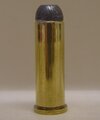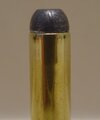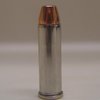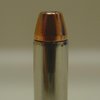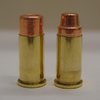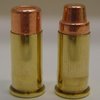For auto calibers with
just a hair of a taper crimp you can seat and crimp in the same step with no problems. The bullet moves so little and the "crimp" is so light it is not a problem. Crimping separately does nothing to increase function or accuracy. It doesn't matter if it is plated, lead, or jacketed. Deburring and chamfering the brass lightly is always a good idea, but I never do it for 9MM, .40, or .45.
Some will say other wise, but that is my take on it.
A
medium to
heavy taper crimp on plated bullets in revolver calibers needs to be crimped in a separate step since there would be too much bullet movement during the crimping while seating/crimping in a single step.
For
jacketed bullets with a well made deep cannelure, or a
lead bullet with a proper crimp groove, there is no need to roll crimp in a second step.
I trim all my revolver brass, as this makes a big difference in the consistency of the crimp. If you do not want to trim revolver brass, I would not recommend seating and crimping in the same step.
I crimp in a second step on most pistol loads, and one or two rifle loads.
Seated and crimped in one step with a Hornady seater.
